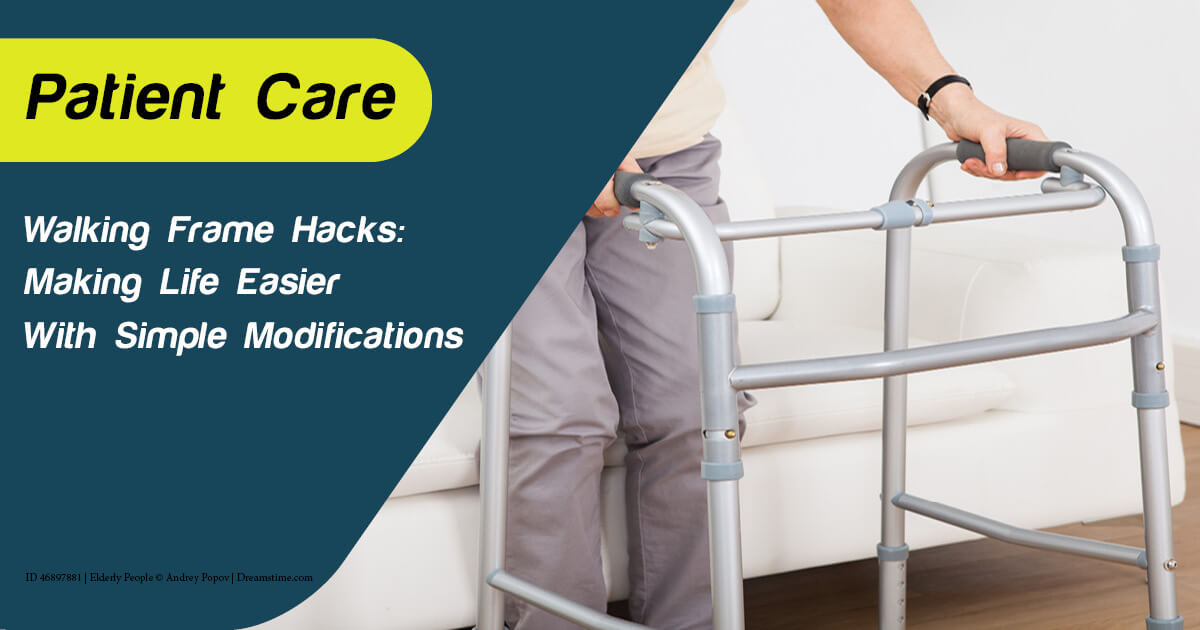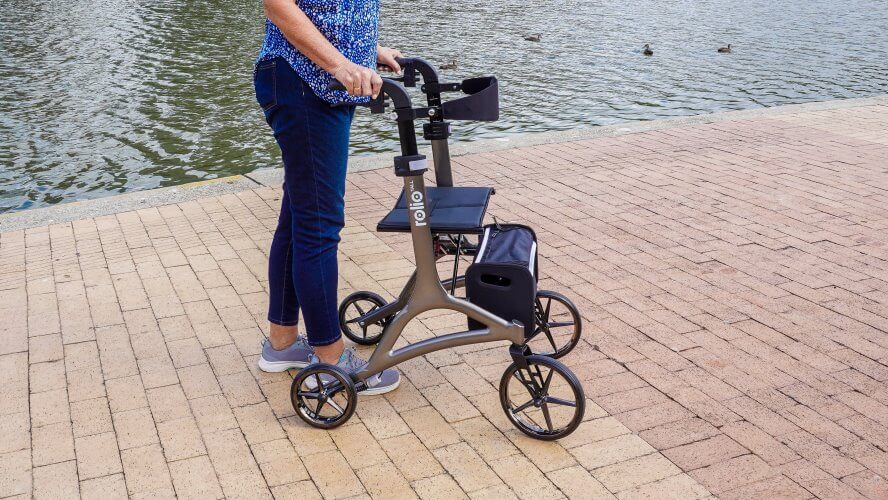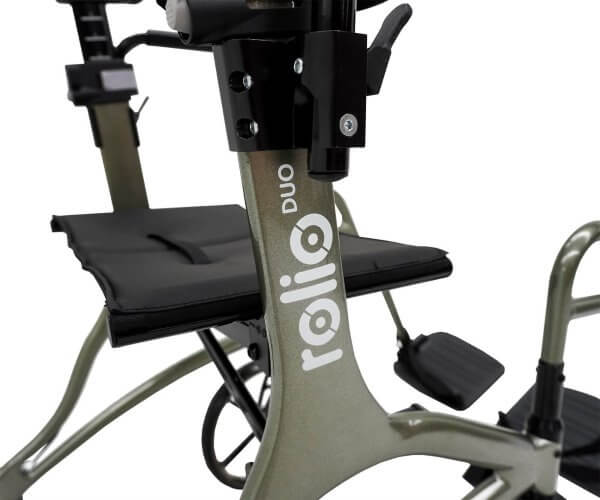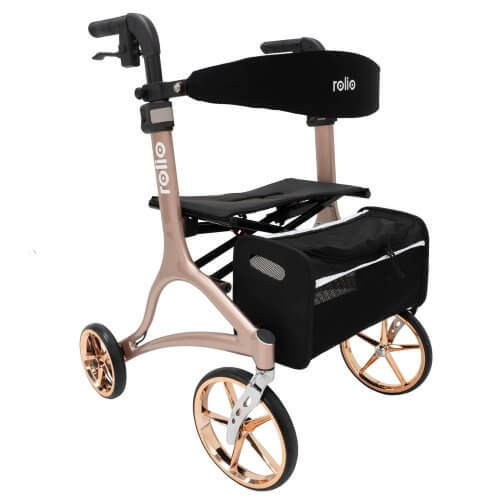
Share
A walker can be invaluable when mobility becomes a challenge, providing stability and independence. Choosing the right walker is crucial—you need to consider various factors to ensure the best fit and functionality. Walkers are designed to support different mobility needs, and finding one that suits your physical requirements and daily activities is essential for improving quality of life.
With so many options on the market, it can be hard to know where to start. However, by focusing on key elements such as weight, height, and mobility requirements, you can select a walker that helps with balance and enhances confidence in daily movement.
Here’s a quick guide!
Key considerations when choosing a walker
Before selecting a walker, it is important to evaluate several factors that can impact its comfort, functionality, and suitability for your specific needs.
Weight
The walker’s weight can significantly affect the user’s experience, especially for those who need it for extended periods or frequent transport. Heavier walkers may offer added stability but can be harder to maneuver, particularly for individuals with limited strength or mobility.
Lightweight walkers are the preferred choice if ease of movement and portability are essential. These walkers provide much-needed support without extra burden and are easier to lift, fold, and carry.
Height and size
To ensure comfort and safety, choosing a walker with the correct height is important. When standing upright with relaxed arms at your sides, the walker’s handles should be at wrist level. A walker that is too tall or too short can cause strain on your body, leading to discomfort or even injury.
Most modern walkers offer adjustable height settings, allowing for a custom fit.
When measuring for height, be sure to also consider posture. For example, individuals who tend to lean forward or have a more curved posture may require slightly different height adjustments to ensure that the walker provides optimal support and comfort.
Mobility needs
Walkers come in various designs depending on the level of mobility required. For individuals with less mobility or more balance challenges, walkers with wider frames and larger wheels may provide better stability.
If the walker is needed for short distances around the home, a smaller, lighter frame might be all that’s necessary.
However, a more durable and stable model with larger wheels and additional features may be better suited for those who need to use the walker outside or for longer walks.
Indoor vs outdoor use
The environment where the walker will be used is another critical factor in your decision. If the walker will mainly be used indoors, a smaller frame with more compact wheels might suffice. If the walker will be used outdoors, particularly on uneven terrain, it’s essential to consider larger wheels and more durable frames.
Outdoor walkers are typically built with all-terrain wheels or specialised suspension systems and kerb handlers to tackle rough surfaces like grass, gravel, or curbs.
Essential features to look for in a walker
When selecting a walker, several key features can improve comfort, safety, and convenience. Here’s what to keep in mind.
Brakes
Brakes are an essential safety feature, especially for four-wheeled walkers. Hand brakes allow users to stop the walker when needed and prevent it from moving when stationary. Brakes are crucial on sloped surfaces or when the user needs to rest.
A walker with reliable brakes provides peace of mind, ensuring that the walker won’t roll away unintentionally.
Seat
A walker with a built-in seat can be incredibly helpful for users who need to rest frequently. If the walker will be used for extended periods, having a seat allows the user to take short breaks whenever necessary.
Storage baskets
A storage basket can make a walker much more convenient, especially for users who need to carry items with them while walking. Many walkers include a storage area beneath the seat or on the frame itself, allowing users to store personal items like a water bottle, medication, or small bags.
This added functionality is perfect for individuals who need their hands free but still want to bring necessary items.
Foldability
Portability is a key feature for many walker users. A walker that can easily fold for storage or transport makes it convenient for individuals who need to travel with their mobility aid. Many walkers have a simple folding mechanism that allows them to collapse easily, making them perfect for storing in the trunk of a car or a closet when not in use.
Product highlight: the Rolio Walker
While there are many walkers on the market, the Rolio Walker stands out for its combination of lightweight design, stability, and versatility. It features a robust yet light frame, making it easy to maneuver indoors and outdoors. Some key features include:
- Lightweight frame: The Rolio Walker is designed to be easy to handle without sacrificing support. Its frame is made from lightweight aluminium and weighs just under 10kg.
- Extra brakes: Feel safer with safety brakes and push-down locks, offering additional safety and stability when rising from a seated position.
- Height adjustment: The handles are adjustable to ensure a comfortable fit for various users. The Rolio offers an additional 130mm of handle height.
- Built-in seat: The walker includes a seat, allowing users to rest when needed. The “supreme” cushioning is designed for optimum comfort. Plus, the padded backrest is adjustable to fit your body type.
- Easy folding mechanism: The Rolio Walker folds easily for storage and transport, making it perfect for those who need a portable solution.
With these features combined, the Rolio Walker is an excellent choice for those who require support during walking but want a walker that’s easy to handle, portable, and comfortable.
How to measure and fit a walker
Choosing the right walker is crucial for ensuring comfort, support, and safety. At Active Mobility, we have in-house occupational therapists available to assist with selecting and fitting a walker tailored to your needs.
Here are a few steps we often take for measuring and fitting a walker:
- Measure the user’s height: We start by measuring the user’s height from the ground to their wrist when standing upright with relaxed arms at their sides. This helps determine the appropriate walker height.
- Adjust the walker handles: Most walkers, including the Rolio Walker, have height-adjustable handles. We will adjust the height so the handles align with the user’s wrists when standing straight.
- Test the fit: Once the walker is adjusted, we will ask you to test it by standing with your hands on the handles. Your elbows should be slightly bent (about 15 to 30 degrees). Further adjustments should be made if your elbows are too straight or bent.
- Confirm stability: We will ensure the walker is stable and all parts are securely attached. We will also test the brakes and ensure the walker functions properly before use.
Find the perfect fit at Active Mobility
Choosing the right walker is essential for enhancing mobility and maintaining independence. Whether you need a lightweight walker for daily use, a seat for resting, or a model with added storage, countless options are available to meet your needs.
For those looking for a versatile, easy-to-use walker, the Rolio Walker is an excellent choice. Its lightweight design, adjustable features, and practical features like the built-in seat and storage basket make it a great solution for users who need support without the burden of heavy equipment.
Shop the Rolio Walker online at Active Mobility for free nationwide delivery! Alternatively, book a trial to experience our range of walkers and discuss your needs with one of our in-house occupational therapists.












